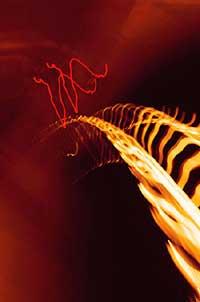Mirror of nature
2001/04/25 Carton Virto, Eider - Elhuyar Zientzia
The valve measures only a millimeter and a half and can give a big boost to booming microfluid technology. Systems that work with microfluids are being developed based on the chemical analysis needs of small environmental and forensic samples, working with controlled drug release implants or solving mathematical problems.

It has been made with a hydrogel valve, soft and flexible as the natural tissue. This hydrogel absorbs and releases water inside the pH. When the pH is alkaline, greater than 8, it absorbs water and when it comes down from 8 it releases water. That is, when the fluid circulating through the valve becomes very alkaline, the valve absorbs water, blows and closes the way. By lowering the basicity, it will release the water and leave the road free again.
Unidirectional flow has been obtained by a V design. On both sides of the canal a barrier consisting of a polymer support and a hydrogel has been placed at the end of each of them. Once inflated, the ends touch and close the channel, but if the flow pressure is high, you can push the bar and pass in the chosen direction. On the contrary, the pressure is exerted against the tip of the V, joining the ends more and hindering the flow. However, when pH is acidic, flow can occur in both directions.
Conventional valves incorporate a sensor to know when to open and close, so the new valve is interesting, but unlike mechanics, hydrogel valves do not close at all times. The hydrogel takes a few minutes to swell completely. Researchers hope to increase the blowing speed with composition changes, as this type of valves have an interesting field of application.

Gai honi buruzko eduki gehiago
Elhuyarrek garatutako teknologia




